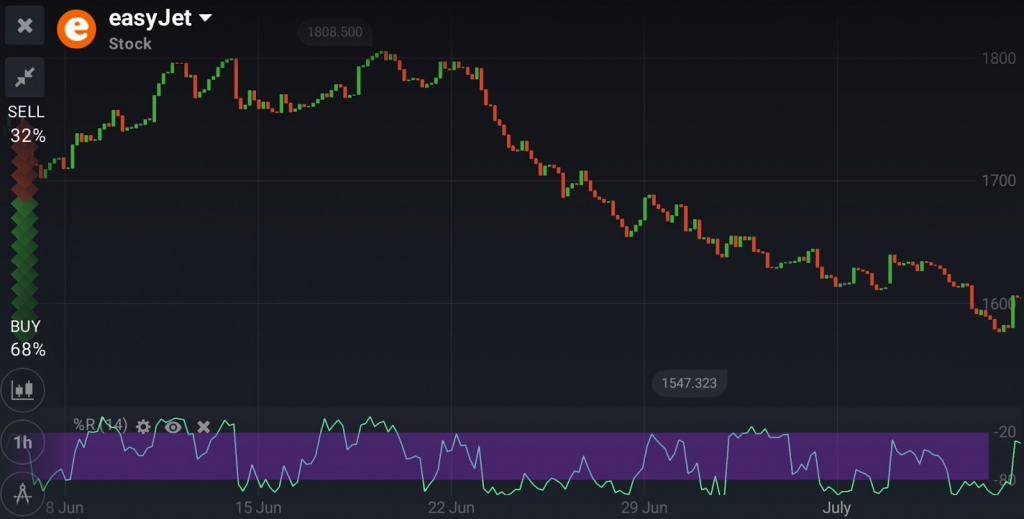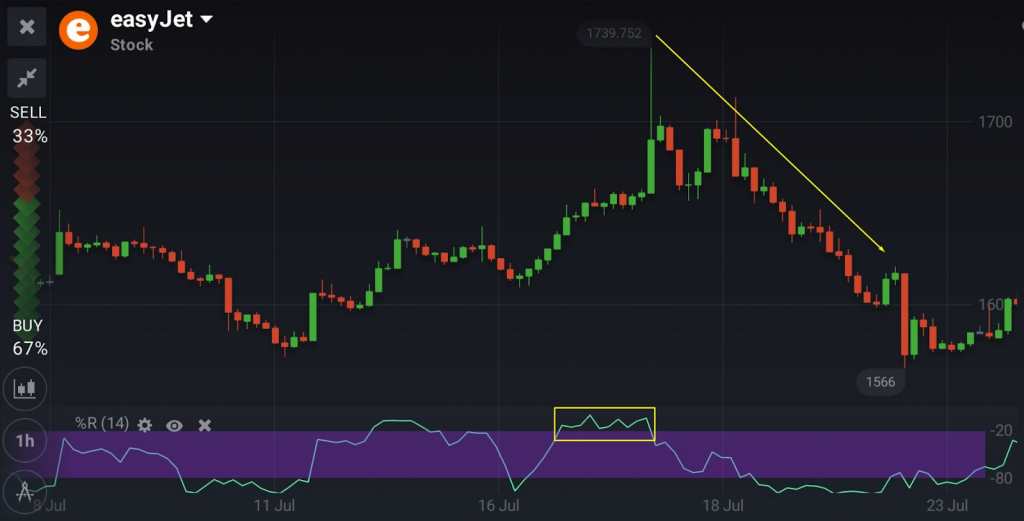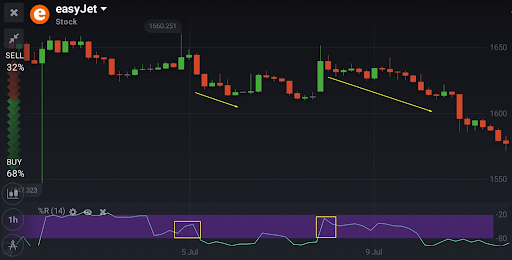Trading with Williams’ %R: How to Spot Trading Opportunities?
Williams’ %R (Williams Overbought/Oversold Index or Williams Percent Range) is an easy but an effective technical analysis tool that surpass at identifying overbought and oversold levels. Intraday, daily, weekly, monthly time intervals are the best choice at working with this indicator. The Williams’ %R is an oscillator and it moves on the scale from 1 to -100, the working process of it in some way is similar to the working process of Stochastic. If you want to use Williams %R effectively, you will need to learn how it works, what it is able to do and what are the constraints.
How does Williams’ %R work on IqOption?
Williams’ %R is an oscillator-type indicator and it is alike to the Stochastic Oscillator in some ways but with the remarkable difference in their scales. The Williams Percent Range is from 1 to 100 but for the Stochastic it can vary from 1 to 100. Moreover, the Stochastic have a moving average, which is used like a source of crossover signals.

As by default the Williams’ R% uses a period which is equal to 14 candles. Therefore, the indicator will cover the period of 14 hours for a 1H graph, and 14 weeks for a 7D graph. Nevertheless, the sensitivity of the instrument can be increased or the number of false signals can be decreased.The indicator shows how the current price compares to the highest price over a set period of time.
When the indicator’s readings come close to 0, it means that the current price close to or higher than the highest price observed during the specific period. Alternatively, when the indicator gets to the -100 threshold, the current price is lower than the lowest price of the exact period. Lastly, when the readings get to the middle of the channel, the current price is equal to the average price of the lookback period.
How to apply Williams’ %R?
There are some ways to start working with Williams’ %R. This indicator is most often used to identify overbought/oversold levels, provide momentum confirmations and trade signals.
Overbought/oversold
The asset is believed to be overbought the indicator is above -20. The asset is oversold when it goes down below -80. It is good that the indicator as by default will use both readings. Thus, you are not ought to adjust the settings before putting the indicator into action. However, do not let this tool fool you because of its simplicity, overbought does not necessarily mean the price is about to fall, just as oversold doesn’t always mean that the price action will shoot up.

Of course, all trends are destined to reverse. But overbought/oversold levels don’t tell you when to await the reversal. Similar signals can be used to approve readings, received from other indicators. Avoid of false and late signals, however, as they are quite common when trading with a single indicator and no approvals.
Momentum confirmations
In trading, momentum is just as crucial as the direction of the trend. A strong momentum means the trend has to last some more. When the momentum becomes weaker, it can be expected to stagnate or even reverse. This kind of information is useful to any trader.
Imagine you have spotted a newborn bullish trend. If the %R reach -20 and stay above it, the current trend can be expected to last (presumably). Other way round %R stays below, the trend might be running out of its strength and can, therefore, be expected to reverse. The same is with the negative trends. When the indicator is below -80, the trend is stronger and can be expected to last. When it gets above the -80 threshold, the reversal is feasible.

Possible limitations
Due to the fact that Williams’ R% will provide many false and late signals, it should not be used only on its own, just as many other indicators. Moreover, it is not able to provide accurate signals all the time. When working with the Williams Percent Range, some traders get out of the trend too early, losing a significant portion of potential upside. Consequently, it is possible to keep the position open as long as the price is getting overall higher (lower for short positions), disregarding the signals provided by Williams’ %R. It is really important to remember that Williams’ %R is still a trading tool, not a prepped strategy.
Leave a Reply